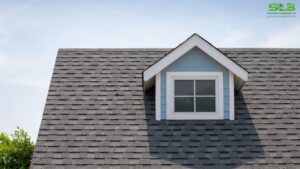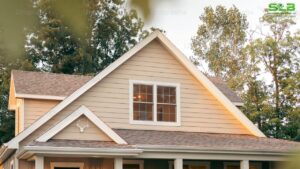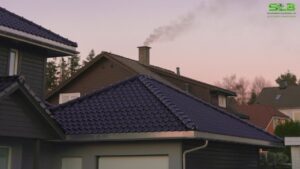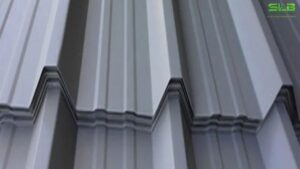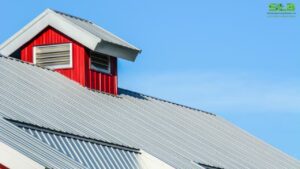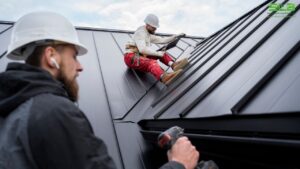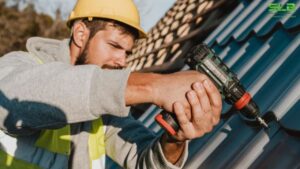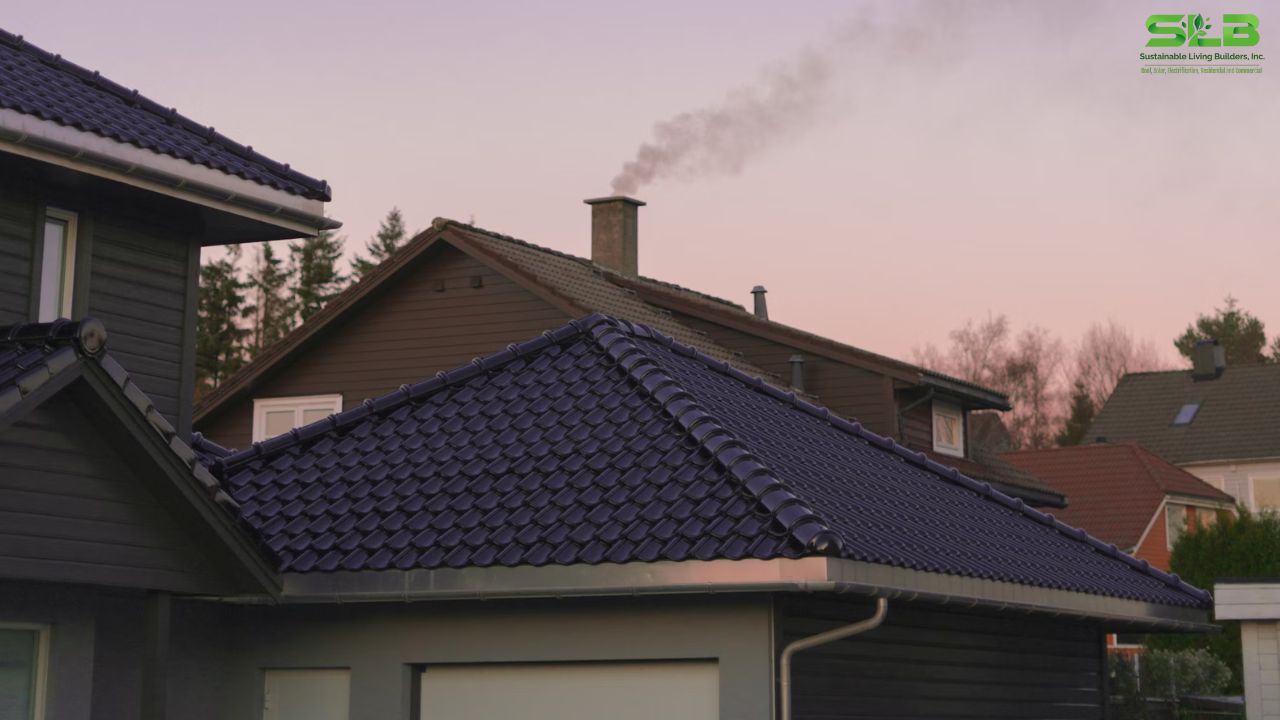
What Is Flashing on a Roof? A Simple Guide for Homeowners
Everyone knows how important a roof is for any building, let alone a home. However, you should know what flashing on a roof is, and why that matters.
If you’ve ever looked up at your home’s roof and wondered about the thin metal strips around chimneys, vents, or walls, you’ve already seen flashing.
Flashing plays a big role in keeping your home dry and protected from water damage. It’s one of those roofing components that many homeowners overlook until there’s a leak. This guide explains what roof flashing is, what it does, and why it’s important for every home.
What Is Flashing on a Roof?
Flashing on a roof is a thin piece of metal or other weather-resistant material that redirects water away from areas of the roof that are more likely to leak.
These are usually spots where two surfaces meet, like where the roof joins a wall, or where a vent pipe or chimney sticks out.
The most common materials used for flashing are:
- Aluminum
- Galvanized steel
- Copper
- Lead
Each type has its pros and cons depending on the roof type and environment.
Why Is Flashing Important?
Water is a roof’s biggest enemy, and without flashing, water can seep into tiny gaps and cause rot, mold, or structural damage. Roofing flashing helps protect these spaces by redirecting water away from them.
Simply put, the purpose of flashing on a roof is to keep your home safe from leaks. Whether it’s heavy rain or melting snow, flashing ensures water doesn’t collect where it can do harm.
For a more technical breakdown, see SLB’s helpful guide: Gutter and Roof Flashing Guide
Common Types of Roof Flashing
Understanding the different types of flashing can help you know what’s on your roof and be prepared for what may need repair in the future.
Step Flashing
Step flashing on a roof is used where the roof meets a wall, such as near dormers or chimneys? It’s a set of metal pieces bent at a 90-degree angle and layered in a step-like pattern beneath shingles and against the vertical wall.
Counter Flashing
Counter flashing is the type that’s installed on the wall above step flashing. It covers and protects the top edge of the step flashing so water can’t get behind it and either leak or cause mold. This keeps your home protected.
Apron Flashing
Apron flashing is the one that’s used at the spot where a roof meets a vertical surface. It’s usually sharped like an apron and can be installed at the base of a chimney.
Valley Flashing
This type of flashing is placed at the spot on your roof where two roof sections meet in a valley. It typically directs water off the roof which then flows out through gutters.
Where Is Flashing Installed?
After knowing about what flashing on a roof is, you would also want to know where it’s typically installed. Flashing is installed in several places on a roof, especially where leaks are more likely to happen:
- Around chimneys and skylights
- At valleys (where two roof planes meet)
- Around vents and exhaust pipes
- Where the roof meets a wall
- At the roof’s edges and ridges
If you’ve seen shiny metal around these areas, you’re looking at flashing. Without it, rain could easily sneak in from the roof or other areas and damage the structure beneath.
To avoid costly repairs, check for signs of damaged flashing and replace it as needed. Learn more at SLB’s article on Common Roof Replacement Mistakes.
Materials Used for Flashing
Most types of flashing are usually made from metal. The best metal depends on your roof type and budget.
- Aluminum: Lightweight and affordable. It’s also easy to bend and install.
- Galvanized Steel: Strong and durable, but prone to rust over time.
- Copper: Long-lasting and attractive. Often used on luxury homes for the appearance.
- Lead: Very flexible and long-lasting, but not commonly used due to cost and environmental concerns.
(Note: Also important is the protective coating on metal flashing. This helps prevent rust and extends the life of the flashing.)
Can You Paint Roof Flashing?
Yes, but you need the right kind of paint. Use paint that’s made for use on metal surfaces, preferably rust-inhibiting. Always clean the surface and use a primer first. Even better, hire a reliable professional to do it.
Painting flashing can improve curb appeal and help it blend in with the rest of the roof.
How Does Flashing Work With Different Roof Types?
Flashing is used on all roof types from shingle, tile, metal, and flat roofs, but how it’s installed may vary.
- On flat roofs, flashing is used to help seal pipe vents and edges.
- On tile roofs, flashing is designed to fit under curved or flat tiles.
- On metal roofs, flashing is often part of a system that includes fasteners, sealant, and gaskets.
If you want to learn more about metal roof installation, SLB explains in this guide: How to Install Metal Roofing
Signs of Flashing Problems
If your roof has any of these issues, flashing might be to blame:
- Water stains on ceilings
- Leaks during heavy rain
- Rusted or loose flashing
- Mold or rot near the roofline
- Shingles lifting near roof joints
Fixing flashing problems early can prevent bigger damage later. SLB offers maintenance tips, particularly for commercial roofs, here: Commercial Roof Maintenance & Repairs
What If There’s No Flashing?
Without flashing, your roof is vulnerable. Water can leak behind walls, damage wood framing, and ruin insulation. If your home is missing flashing—especially in older builds—it’s smart to have a roofer inspect it.
Some homeowners don’t realize their roof lacks proper flashing until there’s a leak. So, don’t wait to find out and protect your home now!
Final Thoughts
So, flashing on a roof is easily one of the most important parts of your roofing system. It keeps water out and protects your home’s structure. From step flashing to chimney flashing, each type plays a role in keeping your home safe.
Don’t wait until you see signs of damage. Check your flashing regularly and replace it if needed. Use quality materials, proper installation, and trust experts like SLB when it’s time to repair or replace.
Sustainable Living Builders (Slb Inc.) supports sustainability through green living solutions, including solar solutions, gutter services, roofing services (including flashing), and more for both residential and commercial buildings.
Offering a free estimate within 48 hours, Slb Inc. offers the best sustainable solutions for residential and commercial projects in the regions of Sonoma, Marin, and Napa counties in California.
Related Articles You May Like
✔️ Why a Solar Roof Tesla Is the Perfect Year-End Upgrade
✔️ Roofing
✔️ Roofing Contractor
✔️ Affordable Roofing Services
✔️ Emergency Roofing: What to Do When Disaster Strikes
MULTIPLE SERVICES, EVEN MORE SUSTAINABLE SOLUTIONS!
If you’re looking for a team of experienced, hard-working, and committed team to take your home or business to a more sustainable future, Sustainable Living Builders, Inc. is here for you! From holistic roofing solutions to innovative solar options, we have many services to help you protect your home and your pocket in a single place. Are you ready to get started?

